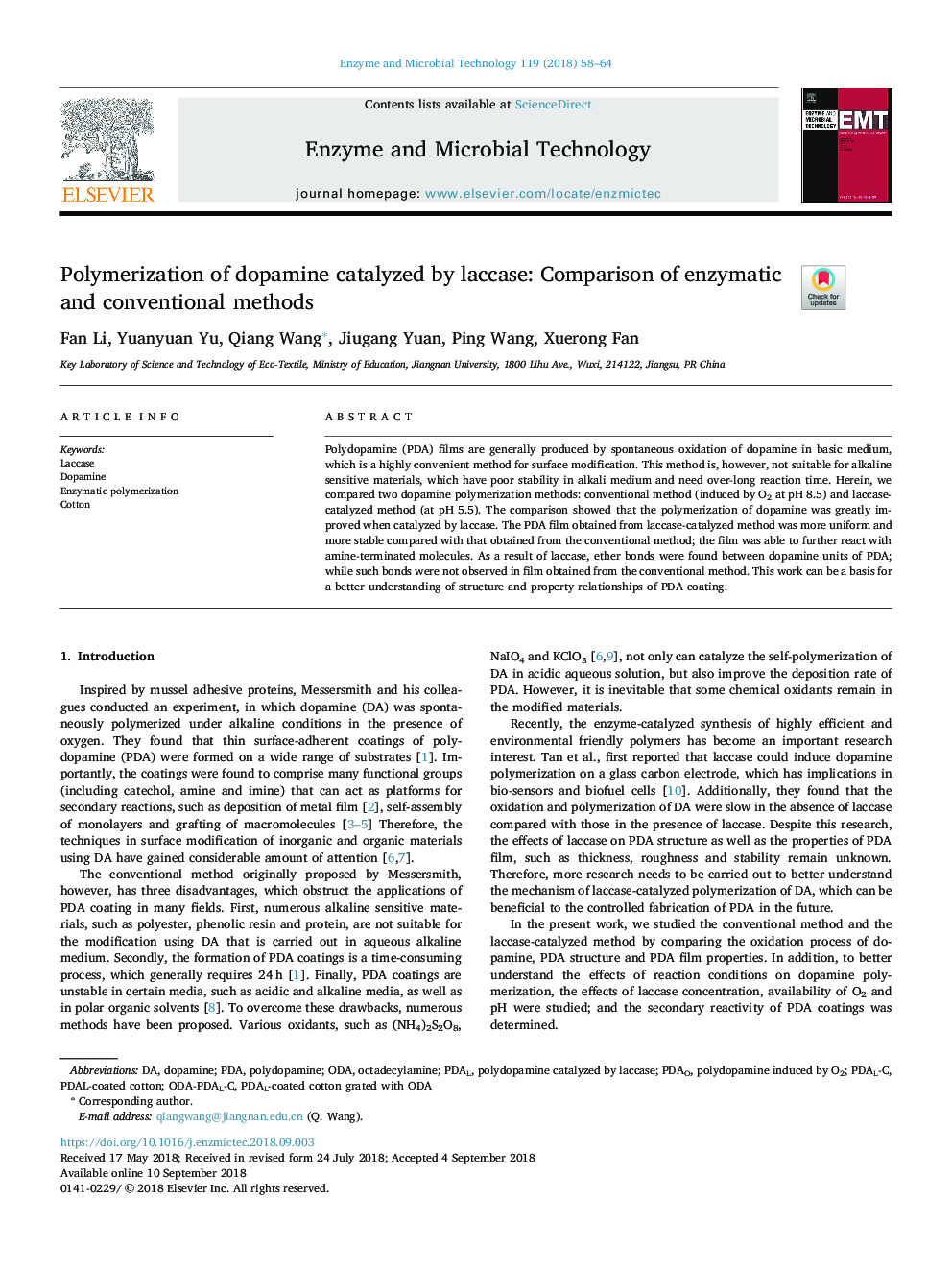| Article ID | Journal | Published Year | Pages | File Type |
|---|---|---|---|---|
| 10126748 | Enzyme and Microbial Technology | 2018 | 7 Pages |
Abstract
Polydopamine (PDA) films are generally produced by spontaneous oxidation of dopamine in basic medium, which is a highly convenient method for surface modification. This method is, however, not suitable for alkaline sensitive materials, which have poor stability in alkali medium and need over-long reaction time. Herein, we compared two dopamine polymerization methods: conventional method (induced by O2 at pH 8.5) and laccase-catalyzed method (at pH 5.5). The comparison showed that the polymerization of dopamine was greatly improved when catalyzed by laccase. The PDA film obtained from laccase-catalyzed method was more uniform and more stable compared with that obtained from the conventional method; the film was able to further react with amine-terminated molecules. As a result of laccase, ether bonds were found between dopamine units of PDA; while such bonds were not observed in film obtained from the conventional method. This work can be a basis for a better understanding of structure and property relationships of PDA coating.
Related Topics
Physical Sciences and Engineering
Chemical Engineering
Bioengineering
Authors
Fan Li, Yuanyuan Yu, Qiang Wang, Jiugang Yuan, Ping Wang, Xuerong Fan,
